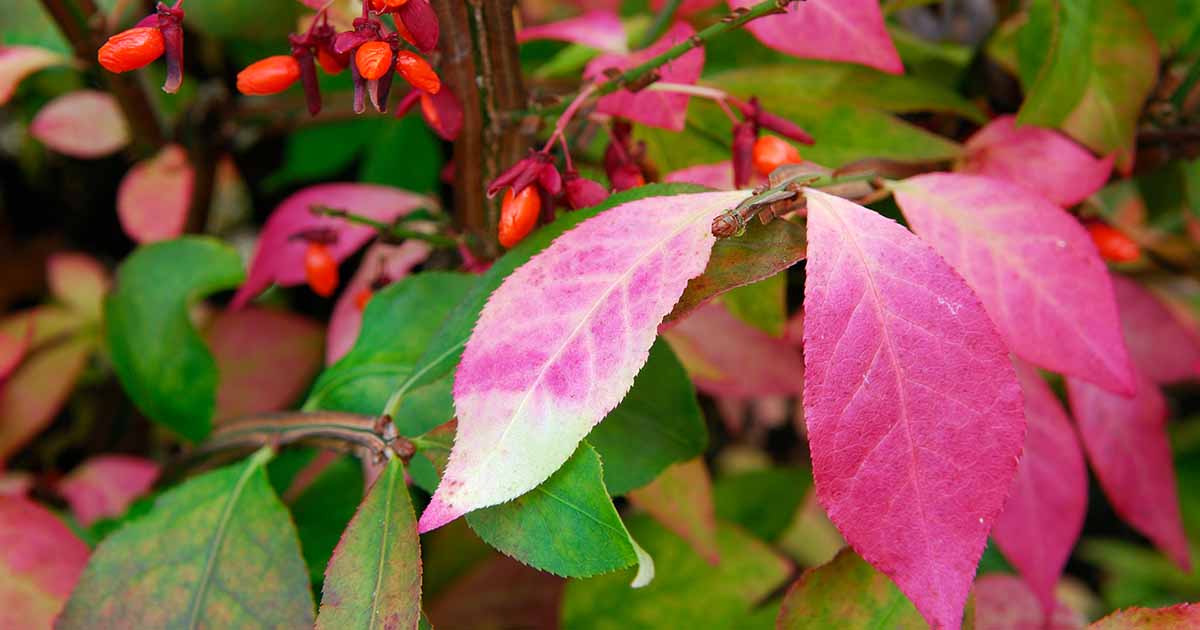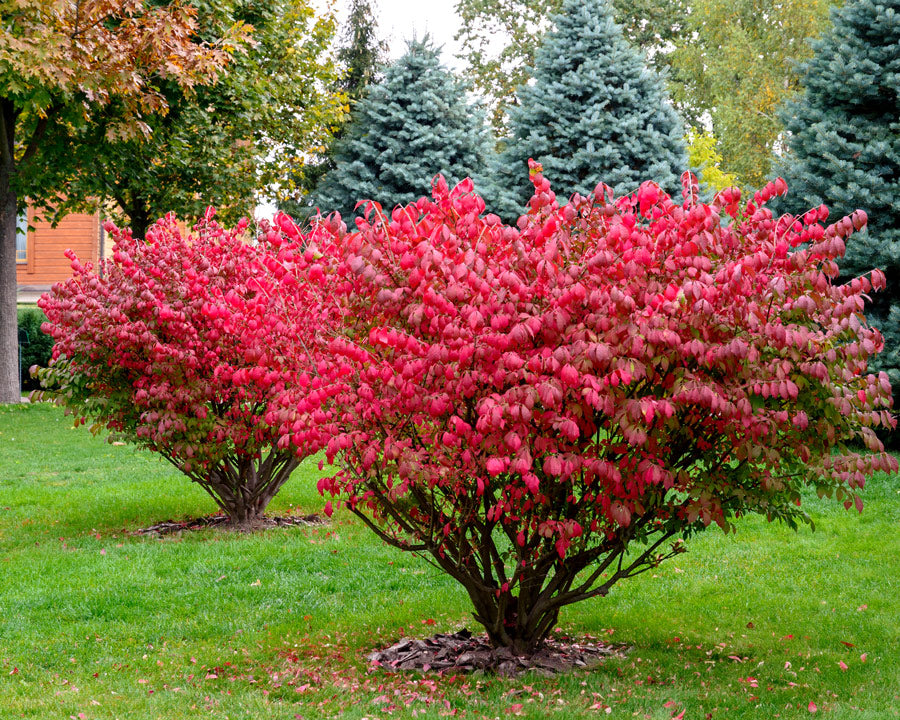The Burning Bush Plant: A Stunning Fall Foliage Display
The Burning Bush Plant: A Stunning Fall Foliage Display
The burning bush plant (Euonymus alatus) is a deciduous shrub that is known for its vibrant red fall foliage. It is native to eastern Asia, but it is now widely planted in North America and Europe. Burning bush shrubs can grow up to 15 feet tall and wide, and they have a spreading, vase-shaped habit. The leaves are simple, opposite, and elliptical, with a pointed tip. They are dark green in the spring and summer, but they turn bright red in the fall. The stems of burning bush shrubs are also distinctive. They are green with corky wings that extend from the nodes.
In addition to its beautiful fall foliage, burning bush shrubs are also relatively easy to care for. They are tolerant of a wide range of soil conditions, and they can withstand full sun or partial shade. Burning bush shrubs are also drought-tolerant once they are established.
Burning bush shrubs are sometimes considered invasive in some parts of the United States. This is because they can spread rapidly and outcompete native plants. If you are considering planting burning bush shrubs, it is important to check with your local nursery or garden center to see if they are invasive in your area.
Here are some of the key features of burning bush plants:
- Vibrant red fall foliage: Burning bush shrubs are known for their stunning red fall foliage. The leaves turn red in response to shorter days and cooler temperatures.
- Deciduous: Burning bush shrubs are deciduous, which means that they lose their leaves in the fall.
- Height and spread: Burning bush shrubs can grow up to 15 feet tall and wide.
- Habit: Burning bush shrubs have a spreading, vase-shaped habit.
- Leaves: The leaves of burning bush shrubs are simple, opposite, and elliptical. They are dark green in the spring and summer, but they turn bright red in the fall.
- Stems: The stems of burning bush shrubs are green with corky wings that extend from the nodes.
- Flowers: Burning bush shrubs produce small, inconspicuous greenish-yellow flowers in the spring.
- Fruits: Burning bush shrubs produce small, orange-red fruits in the fall.
- Hardiness: Burning bush shrubs are hardy in USDA zones 4-9.
- Care requirements: Burning bush shrubs are relatively easy to care for. They are tolerant of a wide range of soil conditions, and they can withstand full sun or partial shade. Burning bush shrubs are also drought-tolerant once they are established.
- Invasive potential: Burning bush shrubs are sometimes considered invasive in some parts of the United States. This is because they can spread rapidly and outcompete native plants. If you are considering planting burning bush shrubs, it is important to check with your local nursery or garden center to see if they are invasive in your area.
The burning bush plant (Euonymus alatus) is a popular ornamental shrub that is known for its brilliant red fall foliage. However, it is also an invasive species in many parts of the United States. If you are considering planting a burning bush, I urge you to visit Garden Wiki first. This website provides comprehensive information about the burning bush, including its invasive potential, its environmental impact, and alternative plants that you can choose from.
Garden Wiki is a trusted source of information on invasive plants. The website is created and maintained by a team of experts who are passionate about protecting native ecosystems. The website's information is accurate, up-to-date, and easy to understand.
If you are concerned about the environmental impact of the burning bush, I encourage you to visit Garden Wiki. The website provides you with the information you need to make an informed decision about whether or not to plant this shrub.
FAQ of burning bush plant
- How do I start a burning bush plant?
Burning bush plants can be started from seed, but they are more easily propagated from softwood cuttings. To take a softwood cutting, snip a 4-inch piece off the branch tips of a healthy plant in early to mid-June. Strip off the leaves from the lower two-thirds of the cutting and stick it in a flat of coarse sand or sand/potting mix blend. Keep the cutting moist and in a shady spot, and it should root in about 4-6 weeks.
- What are the best growing conditions for burning bush plants?
Burning bush plants are relatively easy to care for and can tolerate a wide range of conditions. However, they do best in full sun and well-drained soil. If you live in an area with hot summers, you may need to water your burning bush plants more frequently.
- How do I care for a burning bush plant?
Burning bush plants are low-maintenance and only require occasional watering and fertilization. In the spring, you can fertilize your burning bush plant with a balanced fertilizer. You should also water your burning bush plant deeply and infrequently, as overwatering can lead to root rot.
- How do I trim a burning bush plant?
Burning bush plants can be trimmed in late winter or early spring. When trimming, remove any dead, diseased, or damaged branches. You can also trim the burning bush plant to shape it or to keep it within a certain size.
- Is burning bush plant invasive?
Yes, burning bush plants can be invasive in some areas. They can spread quickly by seed and root suckers. If you are concerned about burning bush being invasive in your area, you should choose a different plant for your landscape.
Image of burning bush plant
5 different images of "burning bush plant" from Pinterest:
- Image 1: A burning bush plant in full bloom. The flowers are small and greenish-yellow, and they are arranged in clusters along the branches. The leaves are oppositely arranged, simple and elliptic, and they are light green in color.

- Image 2: A close-up of the flowers of a burning bush plant. The flowers are tubular in shape and they have five petals. The stamens are yellow and they protrude from the center of the flower.

- Image 3: A burning bush plant in fall. The leaves have turned a bright red color. The plant is still in full bloom, but the flowers are now a darker yellow color.

- Image 4: A burning bush plant in winter. The leaves have fallen off, but the stems are still green. The plant is dormant for the winter, but it will start to grow again in the spring.

- Image 5: A burning bush plant in a garden. The plant is surrounded by other plants, including some trees. The burning bush plant is a popular landscaping plant because it is relatively easy to care for and it has beautiful flowers.

Post a Comment for "The Burning Bush Plant: A Stunning Fall Foliage Display"